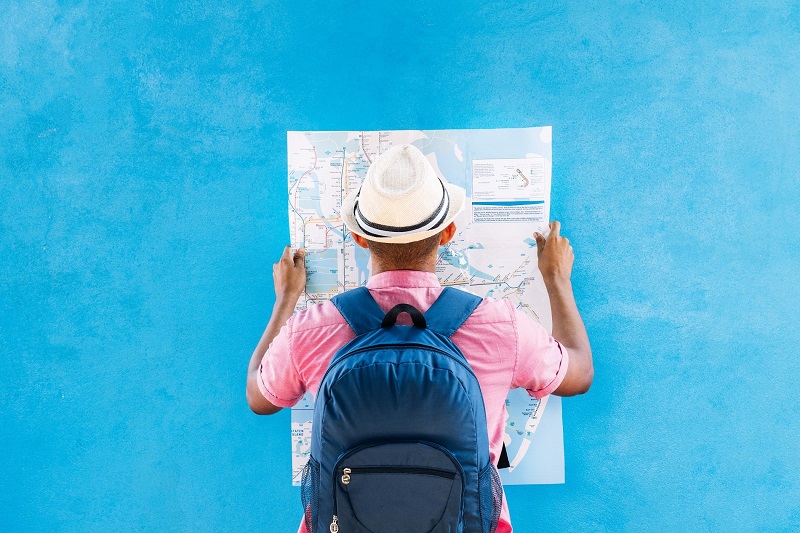Traveling through Europe is an incredible adventure, but language barriers can sometimes make communication a bit tricky. I remember my first trip, trying to order a coffee in Paris and ending up with a croissant instead. It was a delicious mistake, but it highlighted how important clear communication is.
Whether you’re navigating the streets of Rome or negotiating a market in Berlin, a few handy tips can make all the difference. From learning basic phrases to using translation apps, there are plenty of ways to bridge the language gap and ensure your European journey is smooth and enjoyable.
Understanding Language Barriers in Europe
Europe is a tapestry of languages. With over 200 languages spoken across the continent, the potential for miscommunication is high. This section explores the various challenges travelers face due to these language barriers.
Diversity of Languages
Each region in Europe has its own language preferences. For instance, in Western Europe, you’ll encounter languages like French, German, and Dutch. In Eastern Europe, languages like Russian, Polish, and Hungarian dominate. Southern Europe features languages like Spanish, Italian, and Greek. This diversity means that even within neighboring countries, linguistic differences can pose challenges.
Regional Dialects
It’s important to note that each language often has multiple dialects. For example, in Italy alone, you’ll find several variations of Italian, such as Sicilian and Venetian. Similarly, Spain has regional languages like Catalan and Galician in addition to Castilian Spanish. These dialects can add layers of complexity to communication, even if you have some proficiency in the standard language.
Non-Verbal Communication
Gestures and body language play a significant role in communication. However, these can vary widely between cultures. For instance, a thumbs-up in one country might be positive, while in another, it could be offensive. Understanding and researching cultural norms for non-verbal communication can help bridge the gap when words fail.
Using Translation Tools
Technology offers valuable assistance in overcoming language barriers. Translation apps like Google Translate and iTranslate can be lifesavers. Most of these apps provide real-time translations, allowing you to communicate more effectively. However, be aware of the limitations; automated translations may not always be accurate and could sometimes misinterpret context or idiomatic expressions.
Seeking Local Assistance
Locals can often provide invaluable help. Many Europeans speak multiple languages, including English, which is widely understood. Don’t be afraid to ask for assistance; people are usually willing to help if approached politely. Learning basic phrases in the local language can also go a long way in earning goodwill and making interactions smoother.
- Learn Basic Phrases: Simple greetings, thank you, please, and emergency phrases.
- Carry a Phrasebook: Handy for quick reference in various situations.
- Use Visual Aids: Show pictures or written addresses to communicate.
- Stay Patient: Give yourself and the other person time to understand.
- Be Respectful: Acknowledge the effort locals make to understand you.
Understanding these aspects can significantly enhance your travel experience. Reducing the impact of language barriers makes for smoother, more enjoyable adventures across Europe.
Importance of Overcoming Language Barriers
Overcoming language barriers in Europe enhances both travel experiences and business opportunities. Ineffective communication can impede cultural immersion and professional growth.
Impact on Travel Experience
Language barriers can significantly impact travel experiences across Europe. Misunderstandings can occur during essential interactions, such as asking for directions or ordering food. Learning basic phrases in the local language enhances these encounters and prevents miscommunications.
For example, knowing how to greet someone or say “thank you” in the local language typically improves interactions with locals and creates a more immersive experience. Using translation apps like Google Translate provides real-time assistance, ensuring that written information such as menus and signs is comprehensible.
Relying on non-verbal communication can also help. For instance, using hand gestures or pointing to visual aids often clarifies intent, especially in non-English speaking regions. Staying patient and respectful when language barriers arise generally results in more positive outcomes, fostering mutual understanding and cultural appreciation.
Benefits for Business and Networking
Effective communication in Europe proves essential for business and networking. Language barriers often hinder the formation of strong professional relationships, negatively impacting business potential. Overcoming these barriers leads to more efficient networking and collaboration.
Learning key industry-specific terms in the local language demonstrates respect and commitment to business partners. Utilizing professional translation services for documents and meetings ensures accurate communication, avoiding potential misunderstandings and misinterpretations.
Engaging with local language courses improves both language skills and cultural awareness, benefiting long-term business relationships. Bilingual employees or interpreters bridge communication gaps during conferences and negotiations, enhancing comprehension and effectiveness.
Building a professional network across Europe often involves attending international events. Understanding multiple languages increases opportunities to connect with a broader range of professionals, fostering valuable connections and partnerships. Investing in language skills proves advantageous for business success and career advancement.
Practical Tips for Effective Communication
Effective communication across Europe involves a mix of language skills, technology, and awareness of cultural nuances. Here are some practical tips to improve your interactions while traveling.
Learning Key Phrases
Learning a few key phrases can significantly enhance your travel experience. The basics, such as “hello,” “thank you,” “please,” and “goodbye,” can go a long way. For specific needs, phrases like “bathroom,” “help,” and “how much?” prove invaluable. Locals appreciate when travelers make an effort to speak their language, and it often leads to warmer interactions. Each country’s language has its unique charm, so it’s wise to learn phrases relevant to your destinations. Flashcards or language apps can help with this process. Repetition and practice will make these phrases second nature.
Using Translation Apps
Translation apps can bridge language gaps effectively. Google Translate, for instance, offers real-time translation and can even translate text from images. I find it useful to download offline language packs for areas with limited internet access. When conversing with locals, the voice translation feature can facilitate smoother discussions. Additionally, apps like Duolingo offer structured language learning if you want to develop a deeper understanding. While apps are highly beneficial, they sometimes hiccup with idiomatic expressions or regional slang. It’s always prudent to double-check meanings in context.
Non-Verbal Communication Techniques
Non-verbal communication often transcends language barriers. Simple gestures like pointing, nodding, or shaking your head can convey basic messages. Europeans might interpret these gestures differently, so it’s helpful to understand local nuances. For example, in Italy, a headshake might mean yes. Visual aids, such as maps or pictures, can also be useful. Smiling and maintaining eye contact generally foster positive interactions, though cultural perceptions of these actions vary. Observing local behavior provides cues on appropriate non-verbal communication. Practicing these techniques makes interactions smoother and more pleasant.
Adapting to Cultural Differences
Effective communication in Europe involves more than language; understanding cultural differences enhances interactions.
Respecting Local Customs
Each European country has its own customs. Respecting them shows appreciation and can build rapport. For example, greeting with a kiss on the cheek is common in France but can be inappropriate in Germany. When entering someone’s home in many European countries like Sweden, it’s polite to remove your shoes. Knowing these nuances avoids misunderstandings.
When dining out, understanding local etiquette matters. In Italy, asking for cheese to go with seafood can be seen as odd. In Spain, dinner often starts at 10 PM, while in the UK, it’s around 7 PM. Following these customs can lead to a more immersive experience.
Religious practices and holidays also vary across Europe. Observing these shows respect. For instance, many businesses close on Sundays in Austria. In Turkey, acknowledging the significance of Ramadan helps foster mutual respect. Respecting local customs not only enhances personal travel experiences but also builds stronger connections with locals.
Understanding Contextual Cues
Interpreting contextual cues helps navigate conversations. In some cultures, direct eye contact is crucial, while in others it can be seen as rude. For example, in Nordic countries, maintaining direct eye contact shows sincerity, but in some Mediterranean cultures, it can be perceived as aggressive. Recognizing these cues aides effective communication.
Body language varies significantly. A thumbs-up is positive in most places but offensive in Greece. Similarly, nodding might mean disagreement in Bulgaria but agreement in most countries. Understanding these helps avoid miscommunication.
Paying attention to tone and pace is important too. In Italy, animated conversations are the norm, but in Finland, a calm, low tone is preferred. Matching these conversational styles can make interactions smoother. Knowing these contextual cues ensures clearer communication and enriches travel experiences.
Resources for Language Learning
To effectively navigate language barriers in Europe, various resources can help enhance your communication skills. Below, I’ve listed some useful options.
Online Courses and Apps
Online courses offer structured learning, while apps provide convenient, on-the-go practice. Duolingo is a popular choice for beginners, offering gamified lessons in numerous European languages. It’s particularly good for getting familiar with basic phrases and vocabulary.
Babbel is another excellent app, designed for practical use. Lessons are tailored to real-life conversations, making it ideal for travelers. Babbel focuses on grammar, pronunciation, and cultural context to ensure comprehensive learning.
Coursera and edX offer in-depth language courses from major universities. These platforms are great for serious learners wanting more academic content and structured courses.
Although apps are useful for daily practice, they shouldn’t replace live interaction. Combining online courses with real-world practice can lead to more effective language acquisition.
Language Exchange Programs
Language exchange programs provide opportunities to practice with native speakers. Tandem is an app connecting language learners worldwide for conversation exchange. It pairs you with a native speaker of the language you’re learning who wants to learn your language, resulting in mutual benefit.
Another option is ConversationExchange.com, where you can meet locals online or in person. This platform facilitates two-way learning, fostering cultural exchanges and lasting friendships.
Meetup groups in various European cities also organize language exchange events. These groups offer a relaxed environment to practice languages while making new connections.
Choosing a language exchange program not only improves your language skills but also provides cultural insights. Learning from native speakers ensures that your language use is contextually appropriate and culturally sensitive, enhancing your overall travel experience.
Conclusion
Traveling through Europe can be an incredibly enriching experience, but language barriers can sometimes make it challenging. By taking the time to learn basic phrases, utilizing translation apps, and understanding non-verbal cues, we can significantly enhance our interactions and overall experience.
It’s also essential to respect and adapt to cultural differences, which can vary widely across the continent. By doing so, we not only improve our communication but also foster stronger connections with locals.
With the right resources and a bit of effort, navigating language barriers becomes much easier. So let’s embrace the linguistic diversity of Europe and make the most out of our travels and business opportunities.










0 Comments